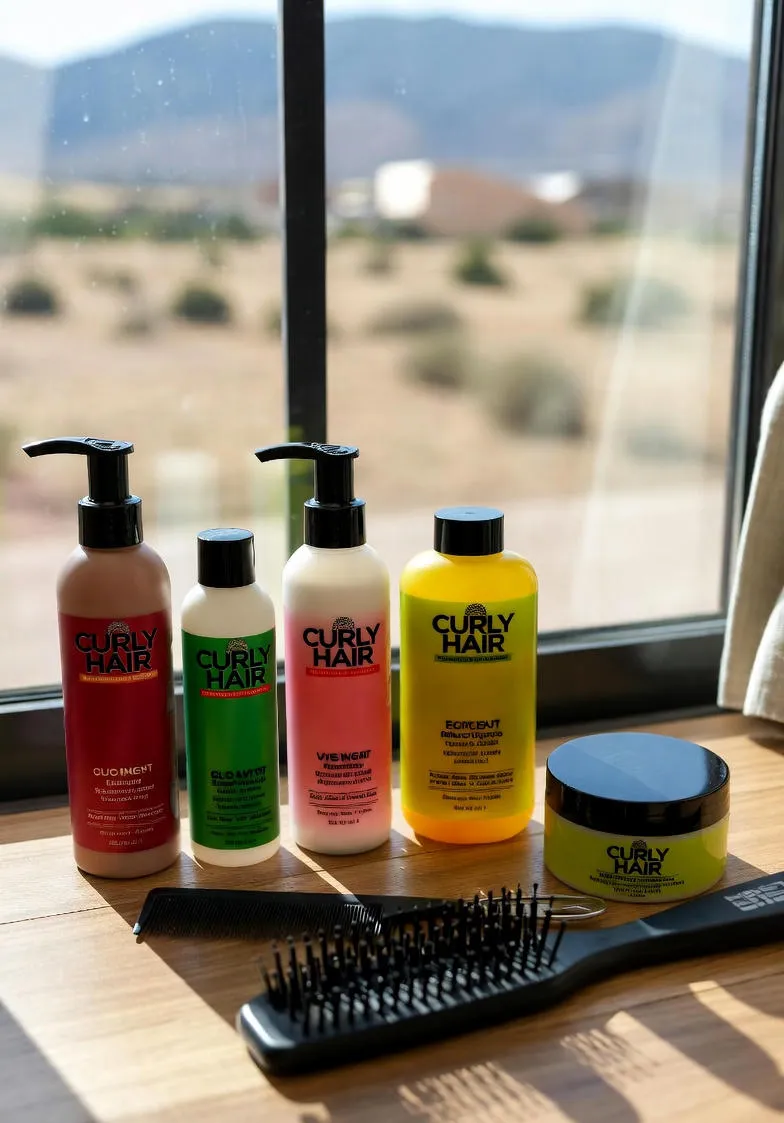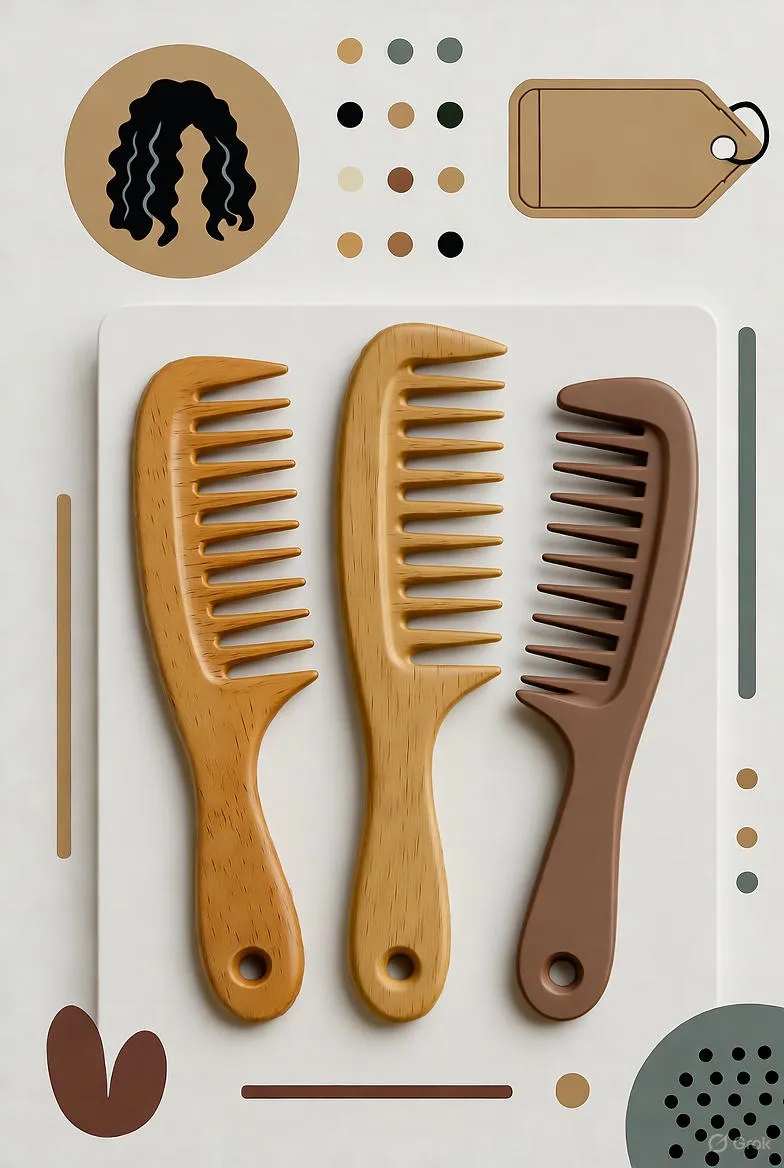Ultimate Guide to Curly Hair Care in Dry Climates: Hydration Tips and Styling Secrets
Discover expert tips for curly hair care in dry climates. Learn hydration routines, product picks, and styling secrets to banish frizz and restore bounce to your curls.

Introduction to Curly Hair Challenges in Dry Environments
Curly hair is a beautiful, unique texture that brings volume, bounce, and personality to any look. However, when you live in a dry climate—think arid deserts, windy plains, or low-humidity winters—those curls can quickly turn into a frizzy, brittle mess. Low moisture in the air saps hydration from your strands, leading to dryness, breakage, and loss of definition. But fear not! With the right care routine tailored to these conditions, you can maintain luscious, defined curls that thrive despite the parched surroundings.
This guide dives deep into practical strategies for curly hair care in dry climates. We'll explore everything from understanding why dryness hits curls harder to building a hydration-focused routine, selecting the best products, and mastering styling techniques. Whether you're a 2C wavy girl or a 4C coil queen, these tips will help you combat the elements and embrace your natural texture.
Why Dry Climates Affect Curly Hair Differently
Curly hair's structure is inherently more vulnerable to environmental stressors. Unlike straight hair, which lies flat and retains moisture more easily, curls form a spiral shape that creates natural gaps between strands. In humid environments, these gaps trap moisture, enhancing curl pattern and shine. But in dry climates, the opposite happens: the air pulls moisture away, causing cuticles to lift and frizz to ensue.
Additionally, dry air accelerates protein loss in the hair shaft, leading to weakened bonds and increased breakage. For those with coily or tightly curled hair, the issue is compounded by the hair's density and reduced sebum distribution from scalp to ends. Sebum, your hair's natural oil, struggles to travel down the twisted path, leaving ends parched. Understanding this is key to targeted care—focus on sealing in moisture, protecting the cuticle, and replenishing lost proteins.
Signs Your Curls Are Suffering from Dryness
- Frizz overload: Even on wash day, curls lack definition and poof out.
- Brittleness: Hair snaps easily when brushed or styled.
- Dullness: Loss of natural shine, making curls look lackluster.
- Scalp issues: Itchiness or flakiness due to overall dehydration.
- Split ends galore: Frequent trims become a necessity.
Recognizing these symptoms early allows you to adjust your routine proactively, preventing long-term damage.
Building a Hydration-First Wash Day Routine
Wash day sets the tone for the week ahead, especially in dry climates where over-washing strips essential oils. Aim for washing every 4-7 days to preserve natural moisture. Start with a pre-poo treatment: apply a generous amount of oil (coconut, argan, or jojoba) to dry hair 30 minutes before shampooing. This barrier protects strands during cleansing.
Choose a sulfate-free, moisturizing shampoo formulated for curls. Look for ingredients like aloe vera, shea butter, or honey that gently cleanse without drying. Massage into the scalp only, letting suds rinse through the lengths to avoid over-stripping. Follow with a deep conditioning treatment—slather on a thick mask with humectants like glycerin or hyaluronic acid, which draw moisture into the hair. Cover with a plastic cap and sit under a hooded dryer or with a warm towel for 20-30 minutes to enhance penetration.
Detangling Without the Drama
Detangling in dry climates requires patience to minimize breakage. Always do it on wet, conditioned hair. Section your curls into 4-6 parts, apply a leave-in conditioner or detangling spray, and use your fingers or a wide-tooth comb starting from ends to roots. For extra slip, incorporate a silk scarf to reduce friction. This method preserves curl integrity and locks in hydration.
After rinsing, refresh with a curl refresher spray mixed with water and aloe vera juice. Gently scrunch upwards to encourage clumping and definition. Air-dry if possible, or diffuse on low heat to avoid heat damage that exacerbates dryness.
Essential Products for Dry Climate Curl Care
Product selection is crucial—opt for those heavy on emollients and occlusives to seal in moisture. Leave-in conditioners should be creamy, not watery, with butters like mango or cocoa to combat arid air. Styling creams or gels with flaxseed or okra extracts provide hold without crunch, while avoiding alcohol-based formulas that evaporate and dry out hair.
For overnight protection, silk or satin pillowcases and bonnets are non-negotiable. They minimize friction and retain moisture overnight. In particularly dry areas, consider a humidifier in your bedroom to add ambient moisture, indirectly benefiting your curls.
DIY Masks for Budget-Friendly Hydration
Not ready to splurge? Whip up homemade treatments using pantry staples. Try an avocado and banana mask: mash one ripe avocado with a banana, add 2 tablespoons of olive oil, and apply for 45 minutes. The fats in avocado deeply nourish, while banana's silica strengthens. Another favorite is a honey-yogurt blend—mix equal parts Greek yogurt and honey with a dash of apple cider vinegar for pH balance. These natural humectants pull moisture from the environment (or your scalp) into the strands.
Apply weekly, and always rinse with cool water to seal the cuticle, creating a smooth, shiny finish.
Styling Techniques Tailored for Dry Climates
Styling in dry weather prioritizes low-manipulation methods to retain moisture. The LOC method (Liquid, Oil, Cream) is a game-changer: start with a water-based leave-in, layer oil to seal, then top with cream for hold. This sandwich technique ensures even distribution and long-lasting hydration.
For twist-outs or braid-outs, pineapple your hair at night—gather into a loose, high ponytail with a scrunchie to preserve shape without flattening roots. In the morning, refresh sections with a spray bottle of diluted conditioner. Avoid tight styles that pull on dry, fragile strands; opt for protective styles like buns or updos with flexi-rods for volume without strain.
Heat Styling: Proceed with Caution
If you must use heat, limit to once a month and always apply a heat protectant with silicones like dimethicone to create a moisture-locking shield. Use a diffuser attachment on your blow-dryer set to cool shot mode post-styling to set curls without further drying.
Embrace no-heat alternatives like plopping: lay a microfiber towel or t-shirt over your head after applying products, letting curls dry in this dome for 20-30 minutes. This reduces frizz by 50% in dry conditions.
Daily Maintenance to Combat Ongoing Dryness
Between wash days, refresh without rewashing. Mist with a DIY refresher: 1 cup distilled water, 1 tablespoon aloe vera gel, 1 teaspoon coconut oil, and a few drops of lavender essential oil for scent. Shake well and spritz on sections, then scrunch to revive bounce.
Trim every 8-12 weeks to remove split ends before they travel up the shaft. Incorporate scalp massages with oils like castor or tea tree to stimulate sebum production and improve overall hair health. Diet plays a role too—load up on omega-3s from salmon, nuts, and flaxseeds to support internal hydration.
Environmental Hacks for Extra Protection
Wearing hats or scarves outdoors shields curls from wind and sun, which can parch hair faster than you think. UV rays break down proteins, so a UV-protectant spray is wise for outdoor enthusiasts. Indoors, avoid central heating vents directed at your seating area; they blast hot, dry air straight at your head.
For travel to even drier spots, pack a mini humidifier or moisture-mist bottle. These small adjustments amplify your routine's effectiveness.
Common Mistakes to Avoid
Even with the best intentions, pitfalls abound. Over-brushing dry hair causes massive breakage—finger-comb only when necessary. Skipping deep conditioning leads to cumulative dryness; make it non-optional. Using cotton towels roughs up cuticles—switch to microfiber or old t-shirts.
Another no-no: hot showers strip moisture faster. Keep water lukewarm and end with a cool rinse. Finally, ignoring protein treatments—while moisture is key, occasional protein masks (with hydrolyzed wheat or silk) rebuild strength without stiffness.
Balancing Moisture and Protein
In dry climates, the moisture-protein balance is delicate. Too much moisture without protein makes hair mushy; too much protein without moisture turns it brittle. Alternate: moisturize 3:1 ratio to protein treatments monthly. Test elasticity—healthy hair stretches 30% when wet without snapping.
Seasonal Adjustments for Year-Round Curl Health
Dry climates aren't static; summers might bring intense sun, winters brutal cold. In peak dry seasons, increase conditioning frequency and layer products thicker. For windy days, pre-empt frizz with anti-humectant serums containing silicones to block excess air moisture (wait, in dry areas, it's more about sealing).
Monitor humidity levels via apps and adjust—below 30% RH demands extra vigilance. Transitioning seasons? A clarifying shampoo monthly removes buildup from heavier winter products.
For multicultural curls, adapt culturally: if your heritage includes shea butter traditions, amplify it in dry zones for ancestral efficacy.
Embracing Your Curls with Confidence
Caring for curly hair in a dry climate is an act of self-love and resilience. It requires consistency, but the reward is curls that pop with vitality, turning heads wherever you go. Experiment to find what resonates with your texture—journal your routines to track what works. Join online communities for support; sharing triumphs over dryness fosters belonging.
Remember, healthy curls start from within: hydrate your body with water and nourishing foods, manage stress to curb cortisol-induced dryness, and celebrate your texture's uniqueness. With these strategies, your curls won't just survive dry climates—they'll flourish.
(Word count: 1,248)


